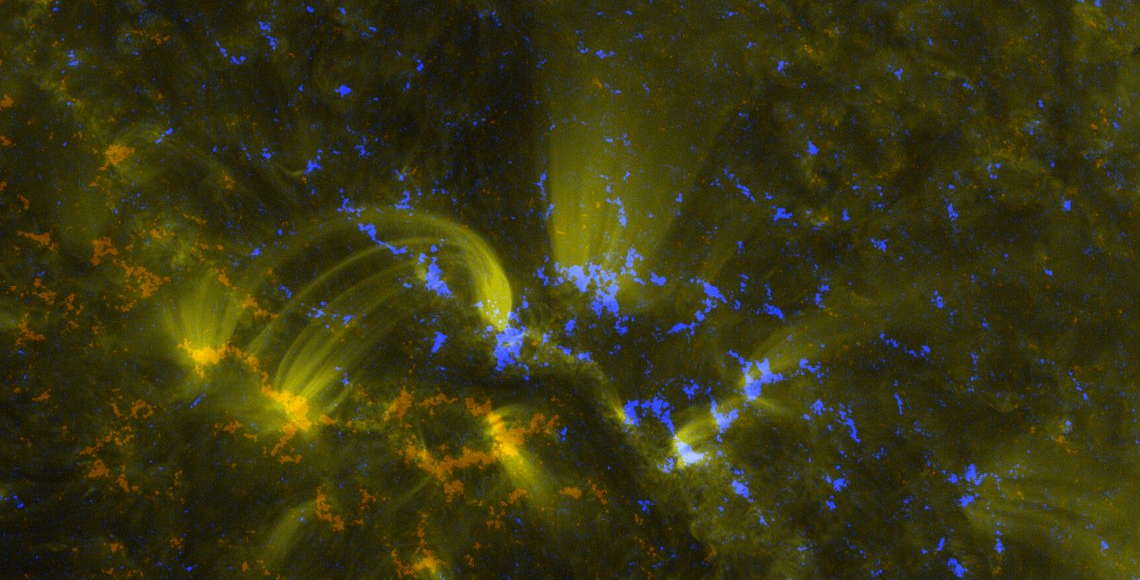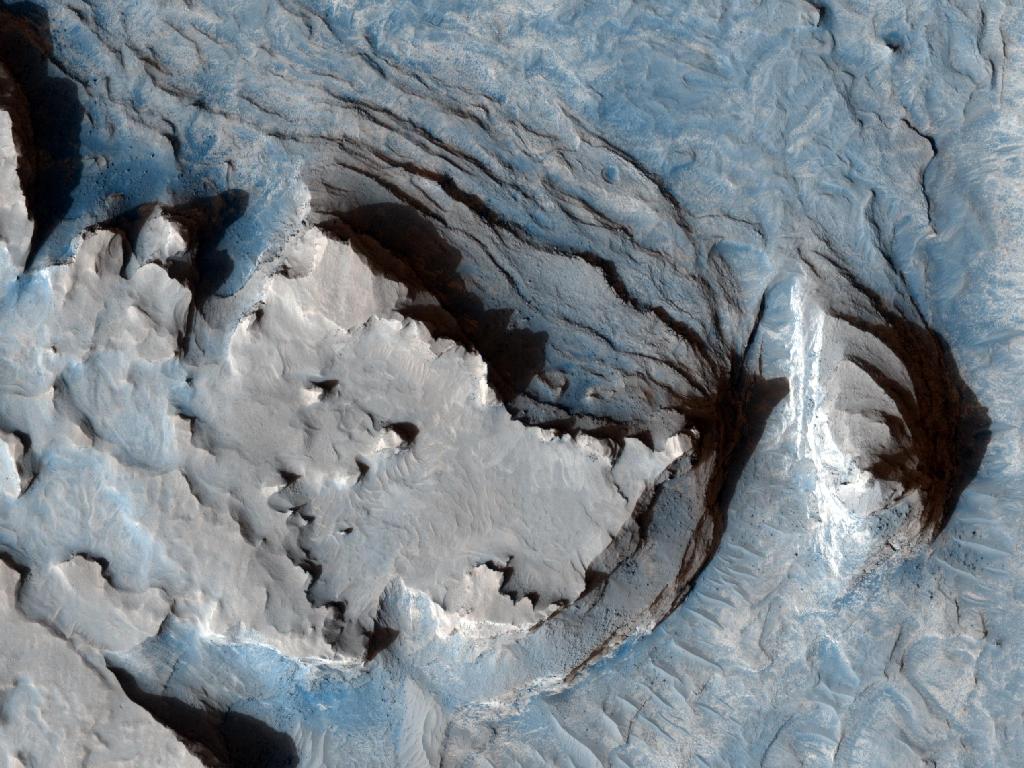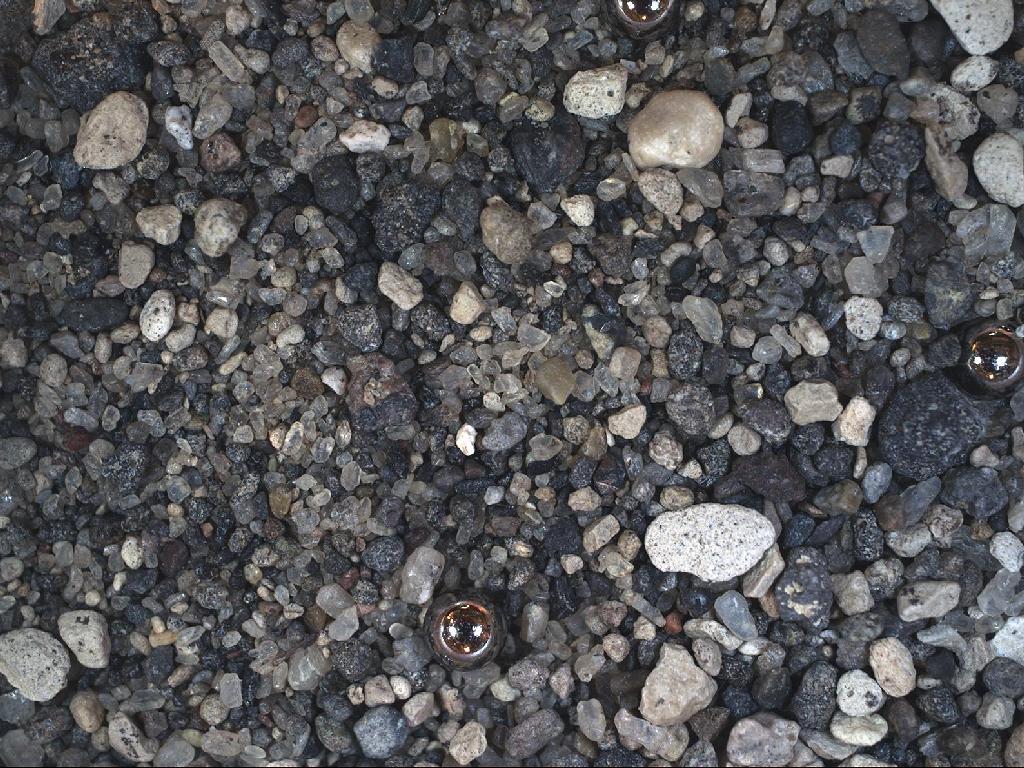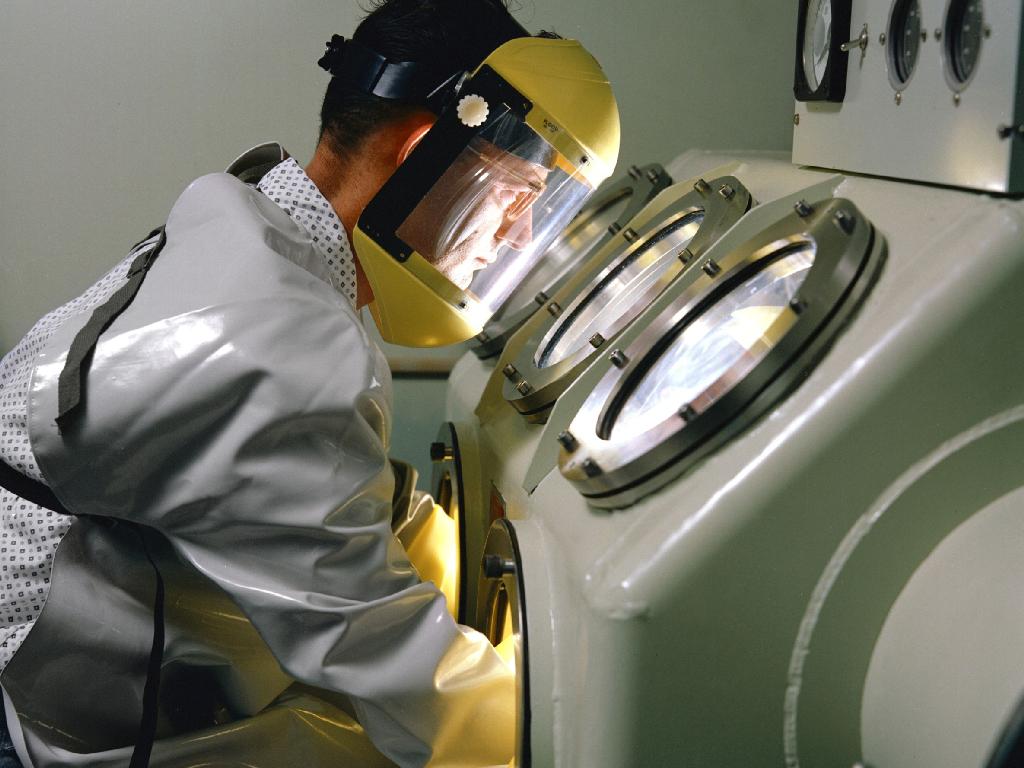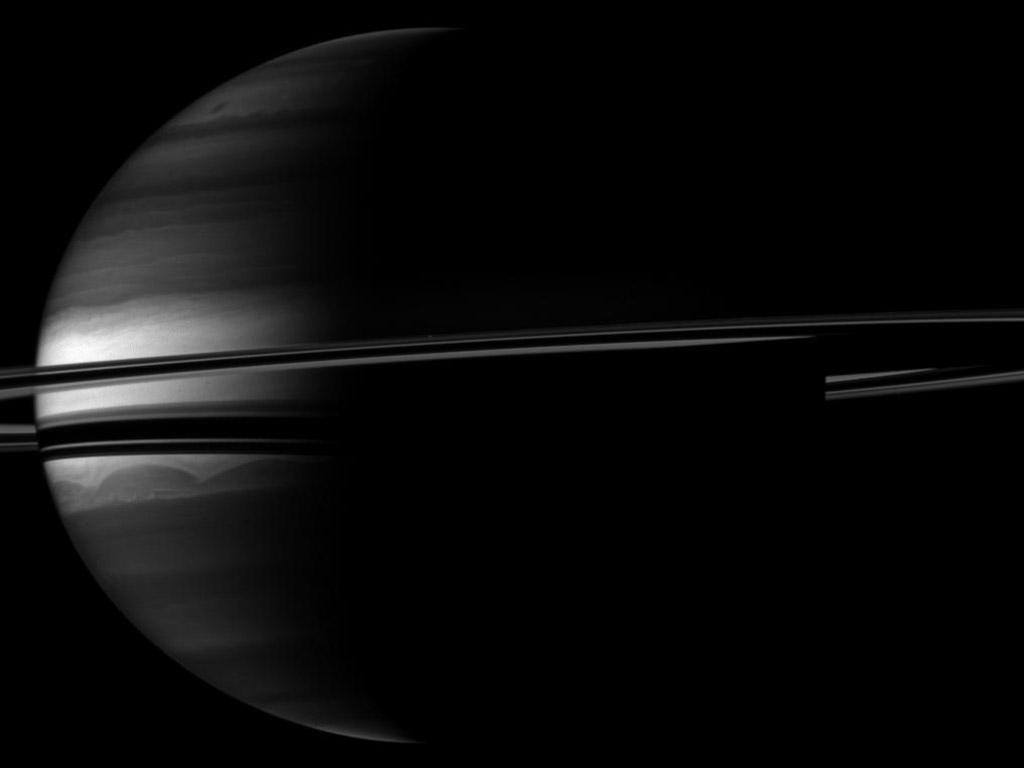Image of the Day: December 2010
The Magnetic Fields
Wednesday, December 1, 2010 This composite image of the Sun taken by NASA's Solar Dynamics Observatory spacecraft shows the HMI magnetic field in blue and orange (indicating opposite polarity) aligned with the AIA 171 channel in extreme ultraviolet superimposed over it (May 23, 2010). The juxtaposition is especially effective at showing how the arcs that we observe in UV light emerge from regions of strong magnetic field.
Chasing Shadows, Moonlight Mystery
Thursday, December 2, 2010 This image, taken on August 13, 2010, by NASA's Cassini spacecraft, shows the moon Enceladus over the bright arc of Saturn's atmosphere.
Remove the Water
Friday, December 2, 2010 This Mars Reconnaissance Orbiter image (released Aug. 1, 2007) shows a ridge in Mars' Terra Meridiani that is most likely a former streambed, now exposed in inverted relief. The stream that formed this ridge must have been ancient, as the ridge is buried by brighter rocks, which are themselves very old, having been thickly deposited and then heavily eroded
I Turn My Camera On
Wednesday, December 8, 2010 This view of grains from a sand dune near Christmas Lake, Ore., was taken by a test version of the Mars Hand Lens Imager (MAHLI) camera on Curiosity, NASA's Mars Science Laboratory, slated to launch in fall 2011. Three 2-millimeter-diameter (0.08-inch-diameter) ball bearings in the scene provide an independent measure of the image scale. This image has a resolution of 15.4 microns per pixel, about twice as high as the camera resolution on Mars Rovers Spirit and Opportunity. The view covers an area about 1 inch, or 2.5 centimeters, across.
SOFIA, So Good
Tuesday, December 7, 2010 The Stratospheric Observatory for Infrared Astronomy, or SOFIA, 747SP sat on the tarmac during nighttime telescope operations at NASA’s Dryden Aircraft Operations Facility in October 2010. SOFIA, a cooperative program between NASA and the German Aerospace Center DLR, took its first science flight Wednesday, Nov. 12, 2010, focusing on the Orion nebula and the Sharpless 140 star cluster.
Behind the Glass
Monday, December 2, 2010 Gary Sullivan demonstrated the use of a vacuum dry box and safety equipment in this April 1963 photo. The box provided an inert, or controlled atmosphere, for handling sensitive materials such as cesium during tests of components and materials for ion motor propellant feed systems.
Sandworms
Thursday, December 9, 2010 The dark rippled dunes of Mars' Proctor Crater likely formed more recently than the lighter rock forms they appear to cover. Researchers believe the dunes slowly shift in response to pervasive winds. This image was taken by HiRISE camera on board the Mars Reconnaissance Orbiter currently circling Mars.
Breaking space news, the latest updates on rocket launches, skywatching events and more!
Land with a Bump
Friday, December 10, 2010 The Soyuz TMA-19 spacecraft with Expedition 25 Commander Doug Wheelock and Flight Engineers Shannon Walker and Fyodor Yurchikhin touches down near the town of Arkalyk, Kazakhstan on Friday, Nov. 26, 2010. They were returning from six months onboard the International Space Station.
You Leave Me Dry
Monday, December 13, 2010 Harrat Khaybar, Saudi Arabia. lies in the western half of the Arabian peninsula, and contains extensive lava fields known as haraat (referred to as harrat for a named field). The most recent recorded eruption of this volcanic field took place between 600-700 A.D. The local climate may have been much wetter during some periods of volcanic activity. Today, the regional climate is hyperarid, leading to an almost total lack of vegetation. The image was taken by the Expedition 16 crew aboard the International Space Station in March 2008.
Put a Ring On It
Tuesday, December 14, 2010 Rings enrobe crescent Saturn in this Cassini spacecraft image. Clouds swirl through the atmosphere of the planet, while barely-visible Prometheus orbits between the planet's main rings and its the thin F ring. Saturn's moon Prometheus appears very small above the rings near the middle of the image.
Hanging Out
Wednesday, December 15, 2010 During the STS-129 mission's first spacewalk in November 2009, astronauts Mike Foreman and Robert L. Satcher Jr. (not pictured) installed a spare S-band antenna structural assembly on the station's truss.

Space.com is the premier source of space exploration, innovation and astronomy news, chronicling (and celebrating) humanity's ongoing expansion across the final frontier. Originally founded in 1999, Space.com is, and always has been, the passion of writers and editors who are space fans and also trained journalists. Our current news team consists of Editor-in-Chief Tariq Malik; Editor Hanneke Weitering, Senior Space Writer Mike Wall; Senior Writer Meghan Bartels; Senior Writer Chelsea Gohd, Senior Writer Tereza Pultarova and Staff Writer Alexander Cox, focusing on e-commerce. Senior Producer Steve Spaleta oversees our space videos, with Diana Whitcroft as our Social Media Editor.
